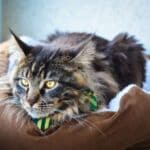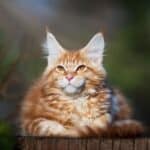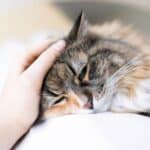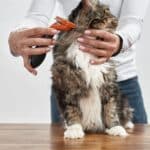When you purchase or adopt a Maine coon cat, you certainly do not think ahead to what will happen if your cat develops some serious illness or disease. Before you follow through with a purchase, make sure you understand the diseases or illnesses that your Maine Coon has a predisposition for.
If you have not done research previously, you will want to do so now. The breeder can tell you the different diseases and illnesses, but it is best to sit and discuss all of these with your veterinarian. They are trained in animal care and should be able to explain these to you in Layman’s terms.
Jump to:
What is Spinal Atrophy

Spinal muscular Atrophy will obviously be a disease that affects the spine in your Maine Coon. It is a condition that will slowly degenerate the spine and cause weak muscles and awkward gait for the cat. Spinal Atrophy is not a fatal disease, and shockingly, it is not painful for the cat.
However, you do need to know that the cat, Maine Coon or other breeds will need plenty of extra care and attention. The neurons that run down the body and to the skeletal muscles of the backside of your cat, begin to degrade or decline if you will. This will get to the point that the cat will not be able to use those muscles.
First Signs
Your cat may not be very old when it begins to show signs of Spinal Atrophy. It could begin to show at around 3 to 4 months. Some much later. At first you may be thinking that the cat is just walking funny, that maybe it hurt itself by bumping into a wall or a tree.
Maybe there was a fight with another animal. There are certain things to look for that will tell you it is time to be seen by your Maine Coons vet. Some signs will include:
- An odd, irregular walk, resembles that of the back legs swaying as the cat walks
- As they are standing still, you may notice that their back legs are touching each other.
You will recognize that these two signs are not common for you Maine Coon or any cat. One other thing to make note of, your cat does not lose the desire to play. There is also no loss of energy. However, as this disease progresses, the cat will be unable to run with other animals or the kids.
He or she will lose the ability to jump up on the bed or furniture. As much as I would love to say that it takes awhile from the first signs to these signs, it really is not. The loss of jumping and running will occur within a short time from the onset of Spinal Atrophy. Probably by 5 or 6 months.
Progression
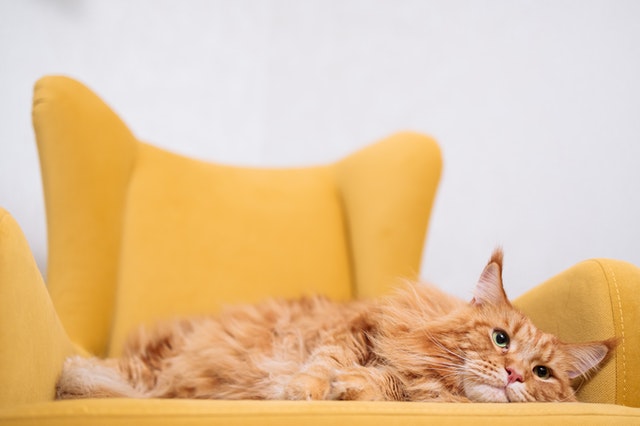
As this disease progresses there will be serious loss of muscles in the hind quarters. This may be somewhat difficult to notice though as the Maine Coon has such long gorgeous fur. This is why I emphasize such an importance in the fact of having regular visits with your veterinarian. They will likely be able to see the slight changes before you do.
Signs and Symptoms
Again, the veterinarian may be the first to notice that there is a change happening in your Maine Coon. Besides the weakness in the rear legs, some other signs
Spinal Atrophy will cause the awkward gait when walking, tremors in the hind legs and the posture will become seriously uneven. The Maine Coon who is afflicted with Spinal Atrophy will be unable to run and play, jump onto furniture or trees, simply stated, he or she will not be able to be active like his or her peers. Their backs may become super sensitive. You will notice this as you attempt to pet your baby on his back. He will react strangely.
You will begin to notice that your baby is losing muscle mass on the hindquarters. This is because he just cannot move like he used to. As much as they are still going to want to play and run around with you, you will notice that they do not have the ability, they get tired out so much quicker, begin to be breathing heavier.
Genetically Inherited
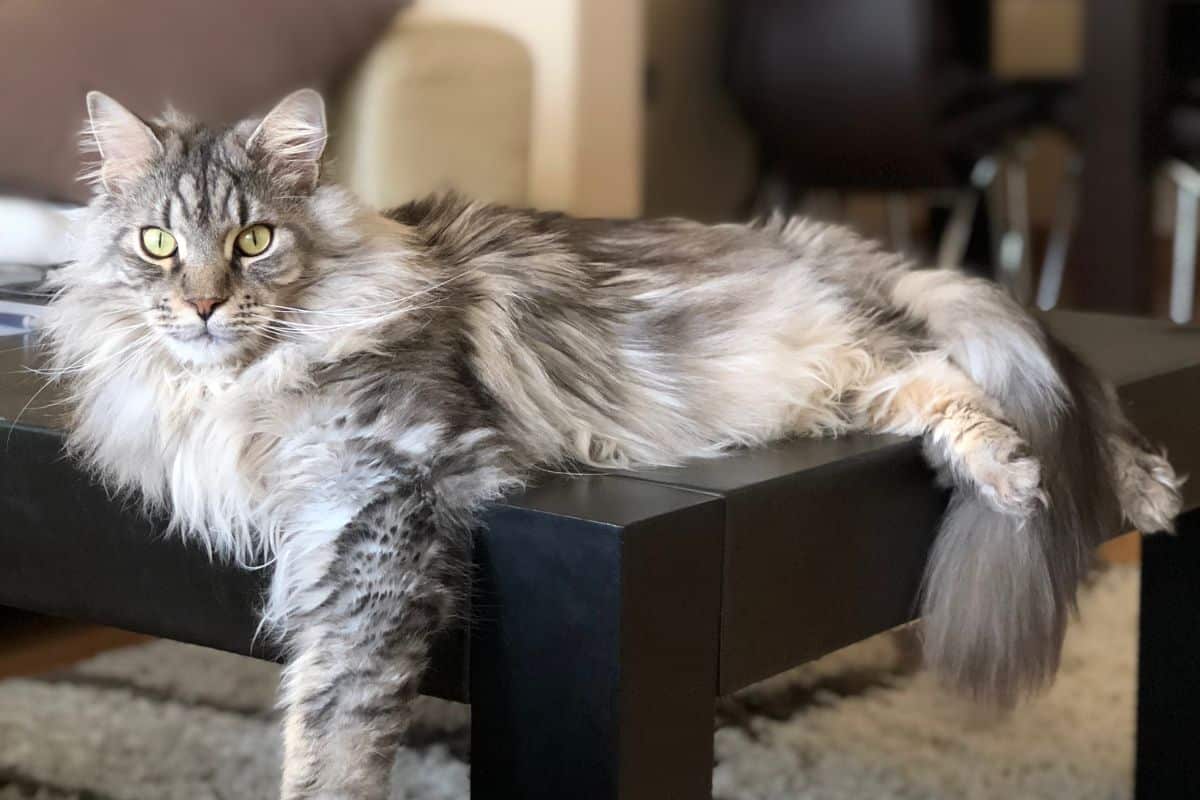
There is nothing you can actually do to prevent Spinal Atrophy. It is an inherited disease for your gorgeous Maine Coon. The way that Spinal Atrophy is inherited, is if the cat inherits one allele of Spinal Atrophy from each parent. If only the stud has the alleles, then the kittens will not be afflicted by the Spinal Atrophy. Same as if the female or mother has the allele but the stud does not. There is no Spinal Atrophy passed on. The kitten will not get SMA unless both the parents carry the recessive gene. Its part of your maine coon genetics.
Treating Spinal Muscular Atrophy
There is nothing that can be done to slow the progression or prevent it completely. There are some suggestions available on how to treat your Maine Coon if they do develop Spinal Atrophy. The suggestions include:
1. Keep your cat indoors- The outside world becomes much more of a dangerous place for a Maine Coon, or other cat that is afflicted with Spinal Atrophy. With the weakness that develops, they are unable to run, or climb to get away from a predator. It is best to keep your cat inside at all times now.
2. If your cat is used to having to jump a level to get to its food, you should really consider putting the food down on the floor, or at least on a level that the cat will be able to reach the food and water.
3. Furniture could be an issue if your baby is used to laying on the furniture for naptime. The gorgeous little girl or guy will be unable to jump up to lay down for a nap. Luckily, you can either place some low stools around to make it easier for the cat to climb, or you could buy some pet stairs. They are available in most pet friendly businesses or on the internet. These are actual sets of stairs that can be moved around as needed. The cat will be able to walk up to take her rightful napping position.
One thing to remember, your feline friend is not going to lose their taste for fun, for playing or for cuddling and communicating with its humans. That love they have for you will be there forever, they just will not have the ability to run and play like they want to.
Although there are many research tests being done for humans that have Spinal Muscular Atrophy, but, as of now, none of these will work for our feline fur babies. Your cat will still be able to live a long and happy life with you. Granted things will be different, but love changes everything! Humans and pets will just need to learn to adapt to new ways of playing.
There will come a point when the disease has progressed so far, that the cat will lose the battle. Just as with humans, you cannot ignore or walk away from your Maine Coon cat because of a disease. By the time it is discovered, there is likely a strong bond built between the family and the cat. It is at this time that your cat will need you the most. He or she is still going to want to be loved, played with and talked to.
A simple DNA test can be done to determine if the kitten has the alleles from both parents, one parent or neither parent. It would take approximately two weeks to get the results back.
Seniors
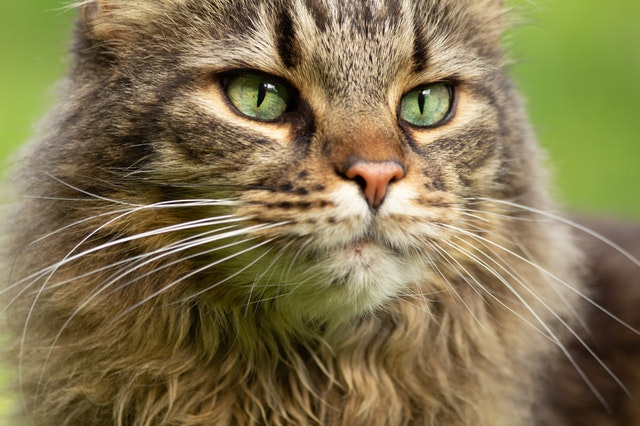
Having stated that muscle weakness in the hind legs is one of the signs of Spinal Muscular Atrophy in your Maine Coon cat, it is wise to remember that many cats, many animals for that fact, do begin to lose muscle strength in their legs as they age. This does not mean they have suddenly developed Spinal Atrophy.
Your veterinarian will be able to do the test and let you know for sure. However, if there has been no sign throughout the first years of your cat’s life, then I would believe it is age creeping up on your not such a baby anymore.
To reiterate, it is highly important that you purchase through a reputable breeder who will have most information available for you. By the time the breeding takes place, there will be some signs that the breeder will have noticed in his or her breeding cats. Pregnancy can happen about the same time that Spinal Atrophy begins to rear its ugly head, around 4 months of age.
Other than that, having regular visits with a trained veterinarian, and also having the DNA test done, if you choose to find out the possibilities, will be the ways to know if there are signs beginning, or if the alleles are showing in the DNA test.

